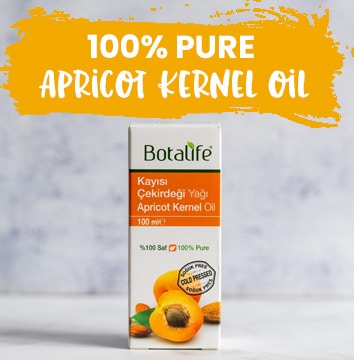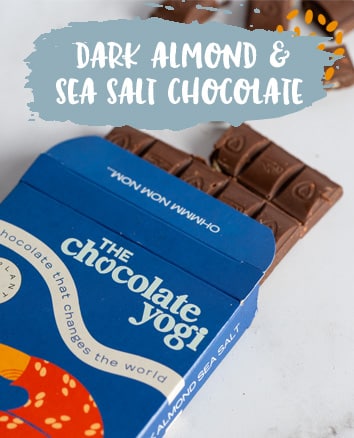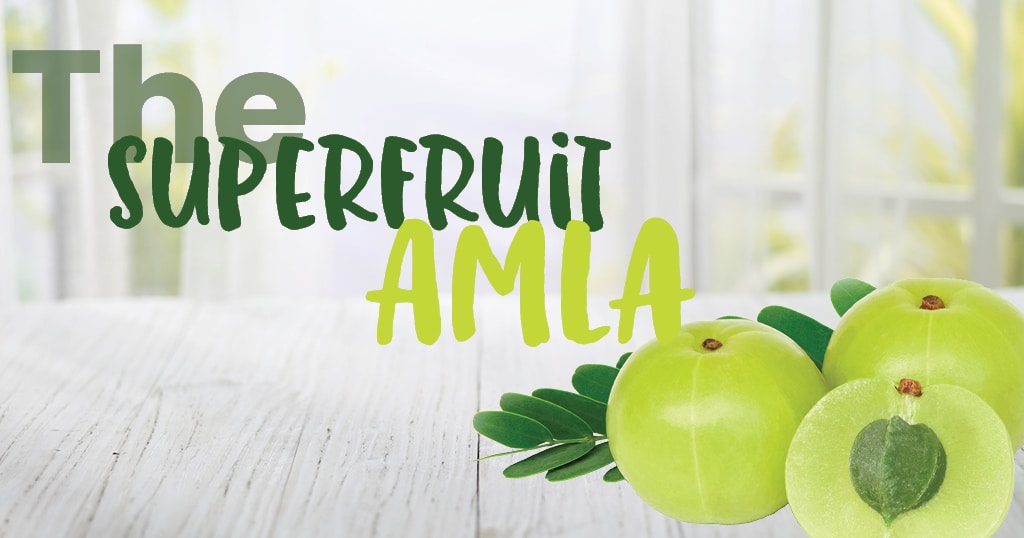
What is Amla
Amla (Amalaki) (Phyllanthus emblica) is one of the most revered and powerful superfruits, used in Ayurveda for many generations. Amla trees grow wildly in India and their berries are filled with an abundance of nutrients, making them common ingredients for cooking recipes and medicinal potions. Amla is also known as Indian Gooseberry. The word ‘Amla’ means ‘sour’, which describes the predominant taste of the fruit, however, the actual taste of the berry is a mix of five of the six tastes (sour, bitter, pungent, astringent, and sweet). The fruit of the Amla tree is a small, yellow-green berry with a ball-like shape. Although it is called Indian Gooseberry, it is quite different than regular yellow gooseberry.
In India, the Amla tree is regarded as sacred. It is worshipped as Mother Earth or the ‘Mother’, and due to its very nourishing effect on the body, is believed to nurture humankind. It has been valued as a highly nutritious, blood purifying, and restorative fruit. And Ayurveda practitioners promote Amla as a means of balancing all three doshas – Kapha, Pitta, and Vista.
Nutritional value and health benefits of Amla
Amla is extremely rich in vitamins and minerals. It is said that Amla has 20 times more vitamin C than an orange. In fact, some sources even suggest that it may have one of the highest concentrations of Vitamin C in the plant kingdom! Amla also has a significant amount of Iron, Calcium, Chromium, vitamin E, tannins, Phosphorus, and antioxidants. Its high vitamin C content helps to work wonders for hair and skin health which is reliant on vitamin C intake for the absorption and function of collagen. Good heart health is also dependent upon vitamin C as this vitamin helps to thicken and strengthen the arteries, prevent heart disease, and may even help with keeping normal cholesterol levels. There is an abundance of phytochemicals present in Amla. These nutrients, namely gallic acid, furosin, corilagin, and quercetin, assist the body in removing harmful free radicals from the body and prevent oxidative stress on a cellular level.
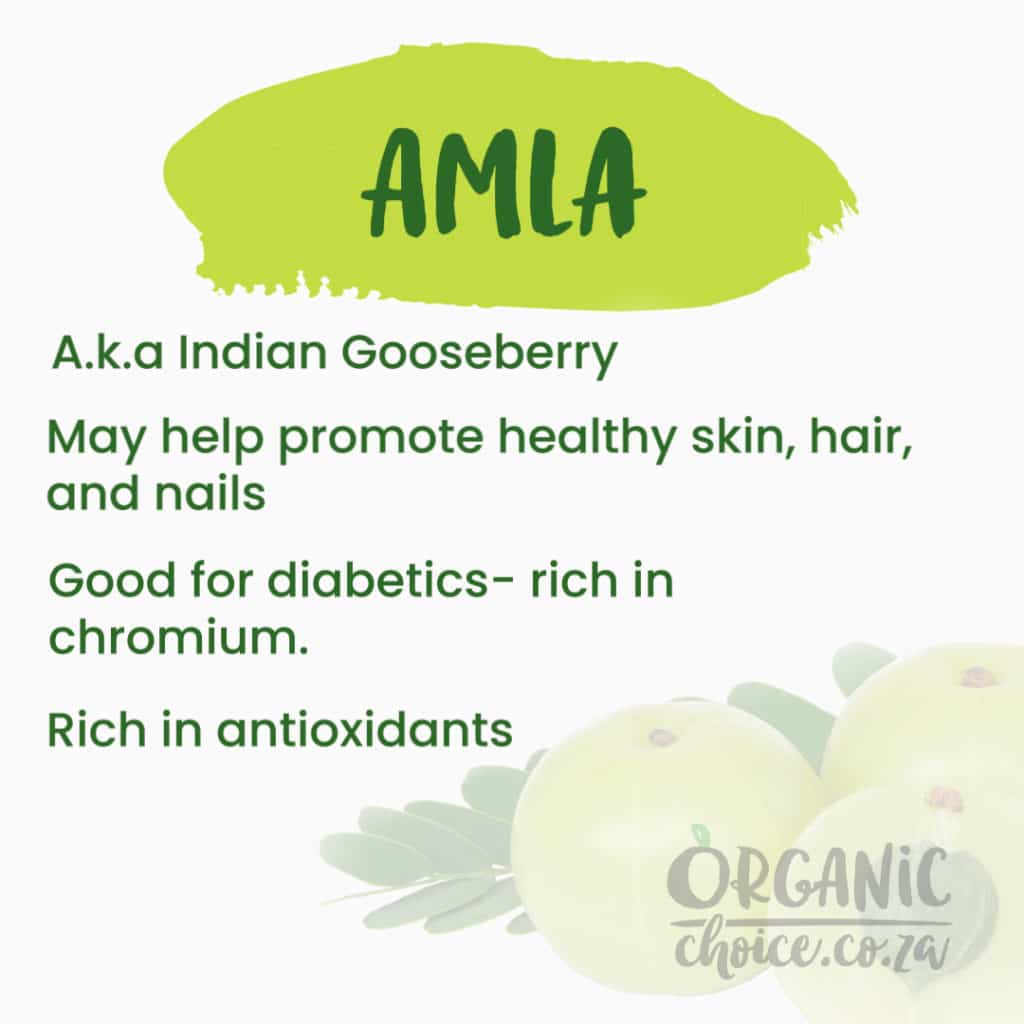
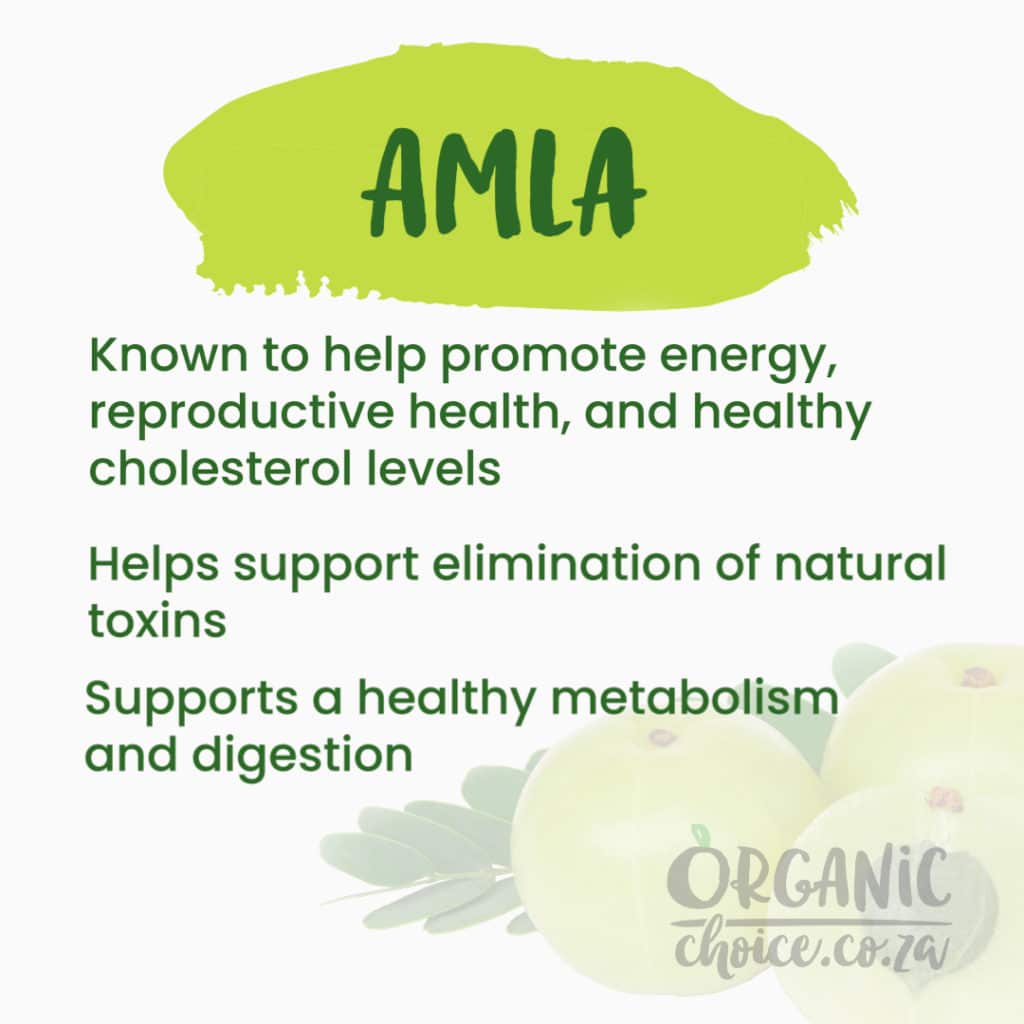
Amla is also rich in Chromium which is great for those with diabetes type 2. Chromium helps to stabilise blood sugar levels and improves the insulin sensitivity of the cells. This miraculous superfruit is also known for supporting healthy metabolism and digestion and aiding with elimination. Amla can improve appetite and help cleanse and protect the liver. It is important to note, however, that amla has anti-platelet properties, meaning that it can thin your blood and prevent normal blood clotting from occurring. Therefore, it is important to not take amla before surgery. If you are already on blood-thinning medication, you should discuss it with your doctor before using Amla. Amalaki is considered to be a highly esteemed rasayana (rejuvinative) for the body as a whole. This tiny but powerful fruit can help promote youthfulness, increases immunity, tonifies the whole body’s tissues, and boosts overall health.
Benefits for hair and skin
Not only is amla great for general health, but it is also perfect for improving hair and skin appearance and vitality.
If you have been struggling with hair loss, massaging your hair and scalp with amla oil (made with Amla powder and organic virgin coconut oil, or any other carrier oil) is one of the best things that you can do for your hair. Amla is literally considered a superfood for hair. Amla oil is thought to strengthen and condition follicles down to the roots. The vitamins, minerals, amino acids, and phytonutrients help to increase circulation in the scalp. These nutrients are also absorbed into the hair follicle which helps to provide enough oxygen and nourishment for the hair, making it stronger and decreasing hair fall. Using Amla Oil as a hair treatment acts as a conditioning agent for the hair, stimulates hair growth, combats dandruff and itchy scalp, and is even believed to prevent grey hair. Due to the high vitamin C content and prominent antibacterial and anti-inflammatory properties, Amla works wonders for reducing dandruff. Moreover, it helps in the clearing of impurities that can accumulate on the scalp and restoring optimum pH levels which aid in decreasing the itchiness of the scalp.
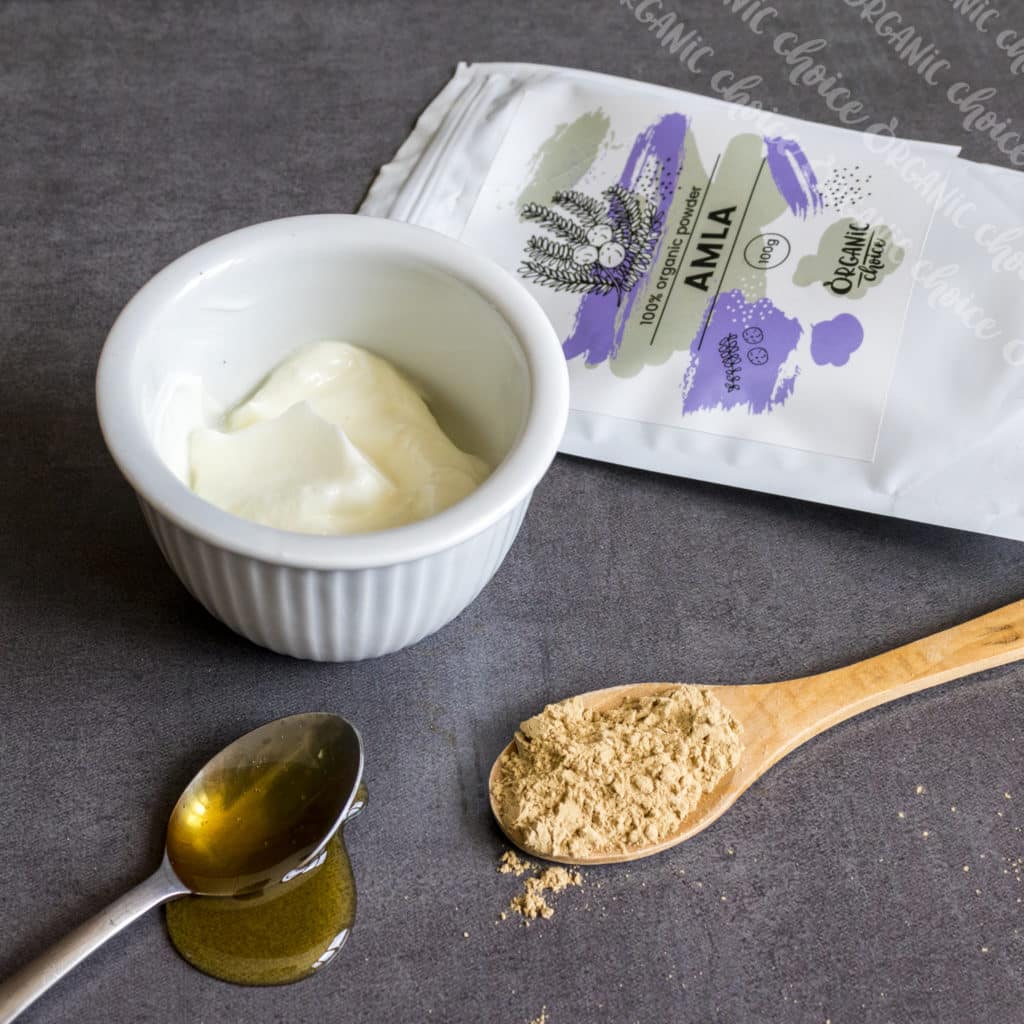
Amla can also be mixed with henna as its acidic nature helps to release the henna dye. The gallic acid present in amla helps to push the henna dye molecules towards an ashier tone. So, if you are looking for less copper/orange tones and instead prefer more of a reddish/brown tone, then mixing amla with henna powder will help you to achieve this.
If amla is added to a combination of henna and indigo, it will help the indigo bind with the hair more effectively. It will result in darker and much deeper brunette shades. For people with curly hair, amla works well to keep the natural curl structure. The Amla and hair dye molecules combine with the outer keratin layers of the hair, which helps to smooth frizzy, damaged hair and strengthens weak, thin strands. The result is heavier, thicker locks with looser curls. This diverse superfruit is so beneficial for the skin as well! If you mix Amla, yogurt, and honey it makes for a great face mask. This combination helps to even out skin tone and will leave it feeling tighter, smoother, and more radiant. Another effective combination is Amla powder, sugar, and Rose Water which can be used as a scrub to keep acne at bay.
Amla is a true powerhouse with versatile applications and health benefits. It is indeed the nurturer of mankind.






